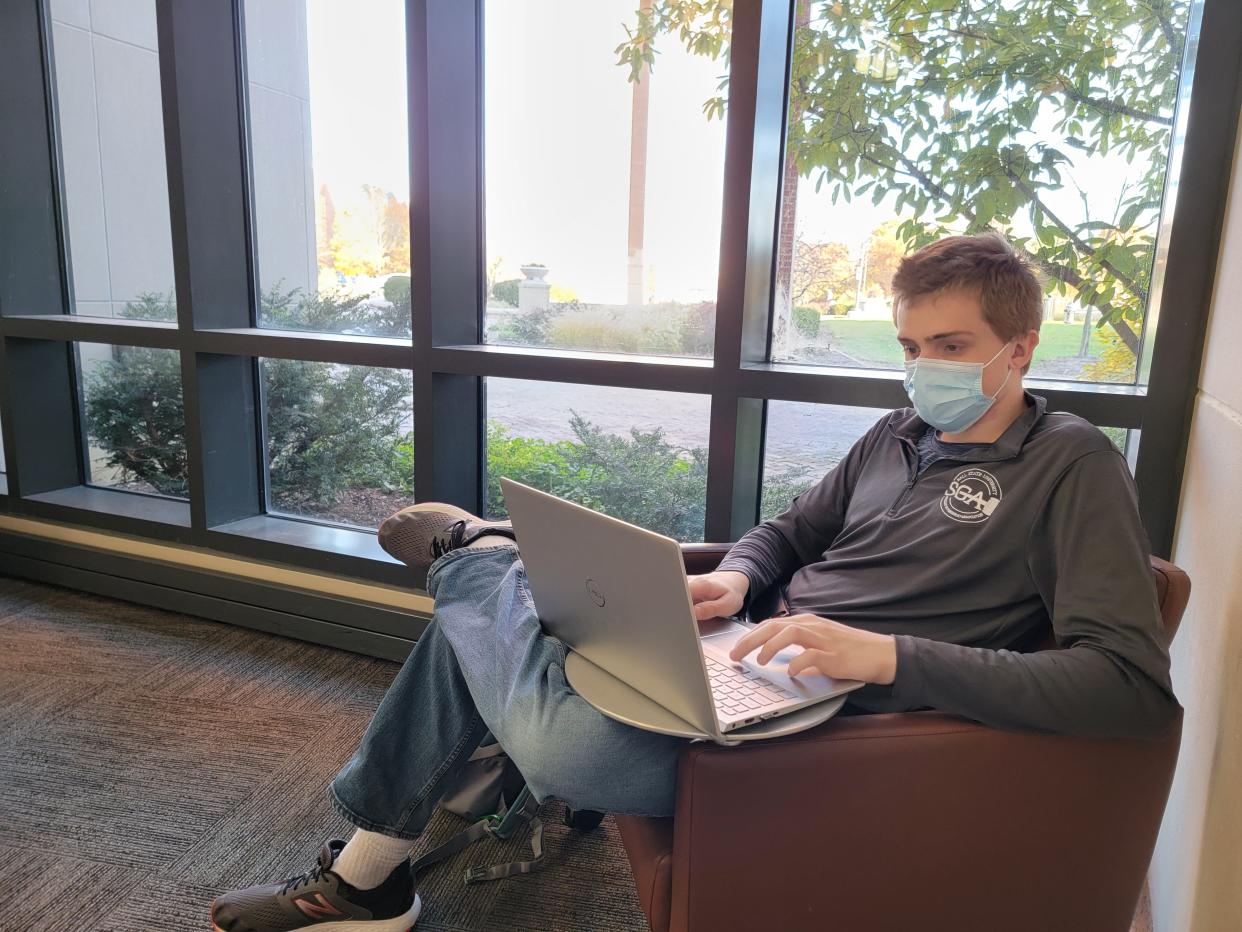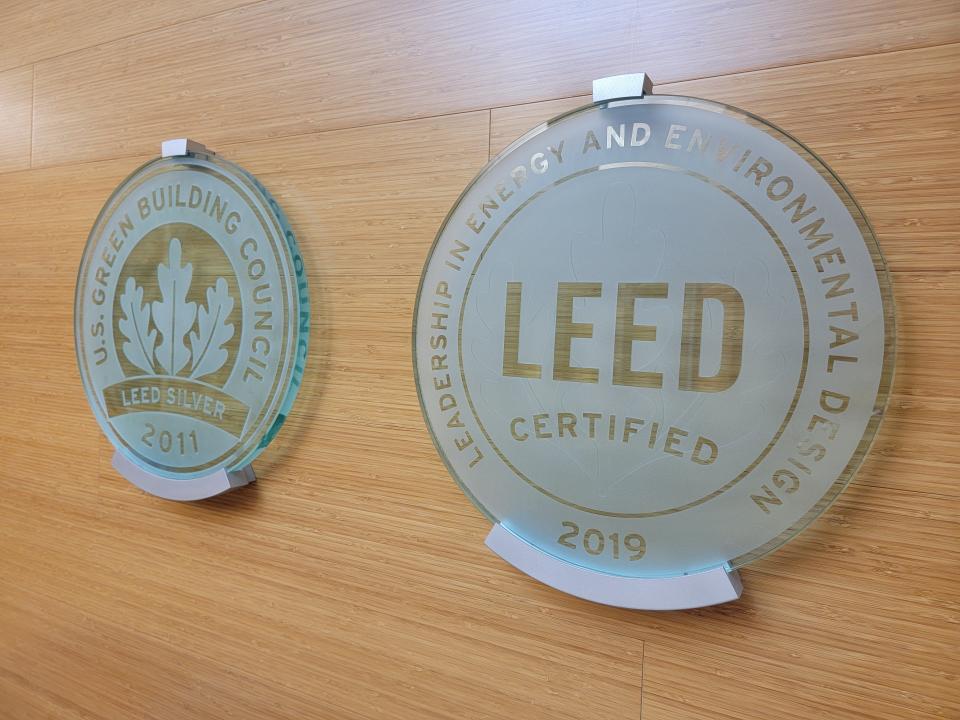BSU sustainability project: Ball State the LEED in green energy with sustainable buildings

Editor's Note: The following is part of a class project initiated in the classroom of Ball State University professor Adam Kuban, who challenged his students to find sustainability efforts in the Muncie area. Several such stories are being featured during November and December.
MUNCIE, Ind. – Over the past 14 years, a gradual revolution has been happening on Ball State University’s 731-acre main campus.
In this case, it’s not the students, the faculty or even the coursework.
While that does eliminate most of what comprises the university, you’d be able to see the revolution with a quick drive through campus. The changes have been there all along. The changes have been coming with its buildings.
The growth on campus has been evident. It seems each new year brings the ribbon-cutting of a new building. Newer buildings such as the Health Professions Building and Foundational Sciences Building on the south side of campus strive for sustainability, but similar attributes fit older buildings, such as the David Letterman Building at the heart of campus. Each of these new buildings is thoughtfully constructed to be sustainable and to achieve the status of a LEED-Certified building.
More: BSU sustainability project: Certain popular backyard plants considered invasive
LEED – Leadership in Energy and Environmental Design – is the most widely used green building rating system in the world. Its requirements are set forth by the United States Green Building Council
LEED-Certified buildings have become a goal of Ball State due to its Center for Energy Research/Education/Service. In 2001, CERES formed the Council on the Environment, according to the COTE’s website. The council meets monthly and serves to give the university recommendations on what it could or should do regarding sustainability.
According to Robert Koester, BSU professor of architecture, some notable changes recommended by COTE include removing lead from campus, converting to a tobacco-free campus as well as integrating hybrid-electric vehicles into the campus fleet. It also created the resolution pursuing sustainable architecture.
“We put forward a resolution saying that all buildings on campus should be LEED-Certified,” said Koester, also the director of CERES. “When we put forward our resolution saying Ball State should adopt LEED certification for its buildings, we were successful in getting an agreement for that, and the university adopted a policy that said all new building construction should be LEED Silver at least.”

According to the USGBC’s website, LEED ratings are on a scale from Certified to Platinum. Silver is the second-tier certification on the scale, and its criteria call for 50-59 points to be earned on their scale of 100 criteria.
Factors pertaining to location, materials used in construction and energy and atmosphere comprise the categories on which LEED certification is based. The first building on Ball State’s campus to be LEED-Certified was the David Letterman Building, and certification was taken into consideration during its design and construction, which was ultimately achieved upon its completion in 2007.
More: BSU sustainability project: Could climate change affect solar energy?
There is even a course at Ball State that allows students to immerse themselves in LEED certification, as well as study and document that each previously certified building is achieving its sustainability goals. This course is known as LEED Lab, and it’s part of a program backed by the USGBC. An instructor for LEED Lab, Janet Fick, associate lecturer of construction management, highlighted what is done as part of the course.
“The one we do in LEED Lab is LEED for Existing Buildings,” Fick says. “We’re looking at them (the buildings) five years down the road. Did they save energy? Did they save water? Did they perform the way they were expected to perform?”
This course ensures accountability of the sustainable architecture on campus.
A 2011 study published by the Pacific Northwest National Laboratory, one of the United States Department of Energy national laboratories, operated by the Battelle Memorial Institute, also served to study and document the sustainability of LEED-Certified.
The study highlighted just some of the benefits of sustainable architecture which included an aggregate operations cost 19% lower than the industry average, carbon dioxide emissions were 34% less than typical buildings and the buildings studied had 25% better energy performance.
For many, the cost to achieve LEED Certification might be a counterargument to achieving such status. Fortunately, LEED has steps to take known as LEED for Existing Buildings that allow older buildings to reach certification with little to no construction needed, according to the USGBC’s website. Sustainable improvements to the building’s interior can earn points towards LEED certification, considering the lasting effects of demolishing an old building and constructing a new one.
Architectural changes at even the smallest levels are effective and can benefit our collective effort to combat environmental issues. There are LEED certifications for existing buildings that apply to cost-effective interior alterations.
Little changes will lead to big changes, benefiting both a building owner’s property and their pocketbook.
This article originally appeared on Muncie Star Press: BSU sustainability project: Ball State takes the LEED in green energy

